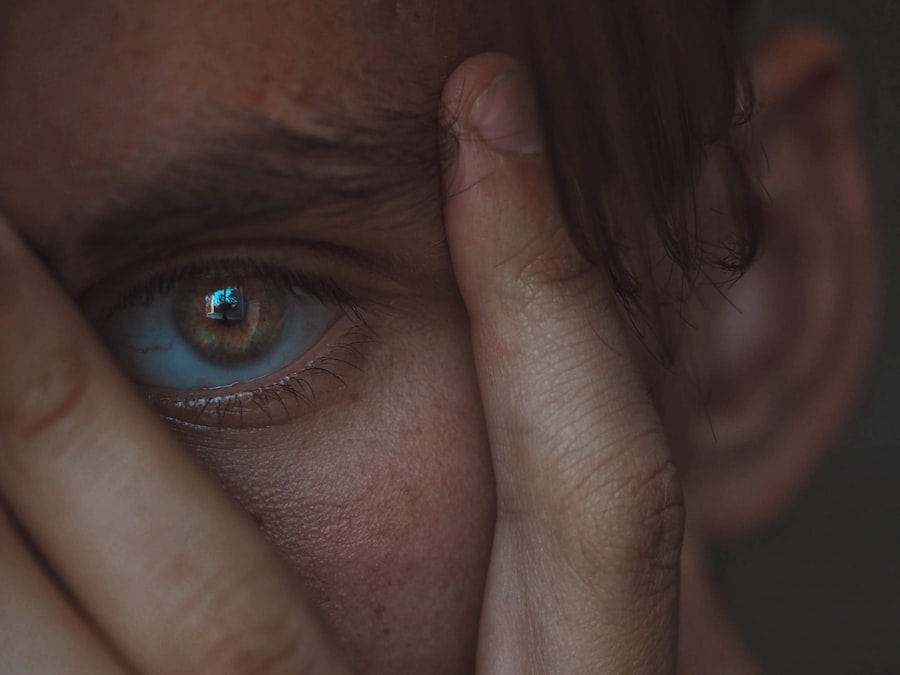Laser hair removal is a popular cosmetic procedure that utilizes concentrated beams of light to target and eliminate unwanted hair. This method has gained traction over the years due to its effectiveness and long-lasting results. Unlike traditional hair removal techniques such as shaving or waxing, which only provide temporary relief, laser hair removal offers a more permanent solution.
The technology works by emitting a specific wavelength of light that is absorbed by the pigment in the hair follicles. This absorption generates heat, which damages the follicles and inhibits future hair growth. As you consider this treatment, it’s essential to understand how it differs from other hair removal methods.
For instance, while shaving can lead to ingrown hairs and skin irritation, laser hair removal minimizes these risks by targeting the hair at its root. Additionally, the procedure can be performed on various body parts, including the face, legs, underarms, and bikini line.
Key Takeaways
- Laser hair removal uses concentrated light to target and destroy hair follicles, leading to permanent hair reduction.
- Before laser hair removal, it’s important to avoid sun exposure, waxing, and plucking to ensure the treatment is effective.
- During the laser hair removal process, a handheld device is used to deliver the laser energy to the targeted area, causing minimal discomfort.
- After laser hair removal, it’s normal to experience redness and swelling, but these side effects typically subside within a few days.
- To manage post-treatment care, it’s important to avoid sun exposure and follow any specific instructions provided by the treatment provider.
Preparing for Laser Hair Removal
Preparation is key to ensuring a successful laser hair removal experience. Before your first appointment, you should schedule a consultation with a qualified practitioner who can assess your skin type and hair color. This assessment is crucial because the effectiveness of laser hair removal can vary based on these factors.
During this consultation, you will also have the opportunity to discuss your medical history and any medications you may be taking, as certain conditions can affect the treatment’s outcome. In the weeks leading up to your appointment, it’s advisable to avoid sun exposure and tanning beds. Tanned skin can interfere with the laser’s ability to target hair follicles effectively and may increase the risk of side effects.
Additionally, you should refrain from waxing or plucking hair in the treatment area for at least four weeks prior to your session. Shaving is typically recommended instead, as it leaves the hair follicle intact while removing the visible part of the hair above the skin. This preparation will help ensure that your skin is in optimal condition for the procedure.
The Laser Hair Removal Process

On the day of your laser hair removal appointment, you will arrive at the clinic ready for your treatment. The practitioner will begin by cleaning the area to be treated and may apply a topical anesthetic to minimize any discomfort during the procedure. Once you are comfortable, they will use a handheld device that emits laser light to target the hair follicles.
You may feel a slight stinging sensation as the laser pulses, but this is generally well-tolerated by most individuals. The duration of the treatment will depend on the size of the area being treated. Smaller areas, such as the upper lip or underarms, may take only a few minutes, while larger areas like the legs or back could take up to an hour or more.
Throughout the process, your practitioner will monitor your comfort level and adjust the laser settings as needed to ensure optimal results. After completing the treatment, they may apply a soothing gel or ice pack to alleviate any redness or swelling in the treated area.
What to Expect After Laser Hair Removal
| Expectation | Outcome |
|---|---|
| Redness and Swelling | Mild redness and swelling may occur immediately after treatment, but typically subsides within a few hours. |
| Sensitivity | The treated area may feel sensitive for a few days, similar to a mild sunburn. |
| Hair Shedding | Some hair may shed in the treated area within a few days to a few weeks after the treatment. |
| Regrowth | After the initial shedding, you may experience a period of minimal hair regrowth before seeing long-term results. |
| Multiple Sessions | Most people require multiple sessions to achieve the desired results, typically spaced several weeks apart. |
After your laser hair removal session, it’s common to experience some mild side effects, such as redness or swelling in the treated area. These symptoms typically subside within a few hours to a couple of days. You may also notice that some hairs begin to shed within a week or two after treatment; this is a normal part of the process as the damaged follicles release their hair.
It’s important to remember that multiple sessions are usually required for optimal results, as hair grows in different cycles and not all hairs are in the same growth phase at any given time. In the days following your treatment, you should avoid sun exposure and refrain from using harsh skincare products on the treated area. This includes exfoliants and retinoids, which can irritate sensitive skin.
Instead, focus on keeping the area clean and moisturized to promote healing. If you have any concerns about your recovery or notice any unusual symptoms, don’t hesitate to reach out to your practitioner for guidance.
Managing Post-Treatment Care
Post-treatment care is crucial for ensuring that you achieve the best possible results from your laser hair removal sessions. One of the most important aspects of aftercare is protecting your skin from sun exposure. Wearing sunscreen with a high SPF is essential for preventing pigmentation changes and protecting sensitive skin from UV damage.
Additionally, wearing loose-fitting clothing over the treated area can help minimize irritation and allow your skin to breathe. Hydration is another key component of post-treatment care. Drinking plenty of water helps keep your skin hydrated from within, promoting healing and overall skin health.
You may also want to consider using gentle moisturizers or soothing creams recommended by your practitioner to keep your skin comfortable during the recovery process. Avoiding hot showers, saunas, and intense workouts for a few days post-treatment can further reduce irritation and allow your skin to recover more effectively.
Long-Term Results of Laser Hair Removal

One of the most appealing aspects of laser hair removal is its potential for long-term results. Many individuals experience significant reduction in hair growth after completing their treatment sessions, with some achieving permanent hair loss in certain areas. The exact number of sessions required varies based on individual factors such as hair thickness, color, and growth cycles; however, most people find that 6 to 8 sessions spaced several weeks apart yield optimal results.
As time goes on, you may notice that any remaining hairs become finer and lighter in color, making them less noticeable. While some individuals may require occasional touch-up treatments to maintain their results, many find that they no longer need to engage in regular hair removal practices like shaving or waxing. This long-term effectiveness not only saves time but also reduces the costs associated with traditional hair removal methods over time.
Potential Risks and Side Effects
While laser hair removal is generally considered safe, it’s important to be aware of potential risks and side effects associated with the procedure. Common side effects include temporary redness, swelling, and discomfort in the treated area. In rare cases, individuals may experience more severe reactions such as blistering or changes in skin pigmentation.
These risks can be minimized by choosing a qualified practitioner who uses appropriate technology for your skin type. Before undergoing treatment, it’s essential to discuss any concerns you may have with your practitioner. They can provide you with information about what to expect and how to manage any potential side effects effectively.
Additionally, following pre- and post-treatment care instructions can significantly reduce your risk of complications and enhance your overall experience.
Maintaining Results and Follow-Up Treatments
To maintain the results of your laser hair removal treatments, regular follow-up sessions may be necessary. Many practitioners recommend scheduling touch-up appointments every 6 to 12 months after completing your initial series of treatments. These sessions help address any remaining hairs that may have been missed during previous treatments or those that have emerged due to hormonal changes.
In addition to follow-up treatments, maintaining healthy skin through proper skincare practices can enhance your results. This includes using sunscreen daily, moisturizing regularly, and avoiding harsh products that could irritate your skin. By taking these steps and staying committed to your post-treatment care routine, you can enjoy smooth skin for years to come while minimizing any potential regrowth.
In conclusion, laser hair removal offers an effective solution for those seeking a long-term method of managing unwanted hair. By understanding the process, preparing adequately, and following post-treatment care guidelines, you can maximize your results and enjoy smoother skin with minimal effort over time. As with any cosmetic procedure, being informed and proactive will help ensure a positive experience and lasting satisfaction with your decision.
If you are considering laser hair removal, you may be interested in reading about the experiences of others who have undergone the treatment. One article that provides insight into the before and after results of laser hair removal can be found here. This article discusses the process of laser hair removal and showcases the transformation that can be achieved through this popular cosmetic procedure.
FAQs
What is laser hair removal?
Laser hair removal is a cosmetic procedure that uses a concentrated beam of light (laser) to remove unwanted hair. The laser targets the pigment in the hair follicles, damaging them and inhibiting future hair growth.
How does laser hair removal work?
During the procedure, the laser emits a light that is absorbed by the pigment in the hair follicles. This damages the follicles and inhibits future hair growth. Multiple sessions are usually required to achieve long-term hair reduction.
What areas of the body can be treated with laser hair removal?
Laser hair removal can be used to treat unwanted hair on various areas of the body, including the face, legs, arms, underarms, bikini line, and back.
What are the benefits of laser hair removal?
The benefits of laser hair removal include long-term reduction in hair growth, smoother skin, and the elimination of ingrown hairs. It is also a relatively quick and non-invasive procedure.
What should I expect before and after laser hair removal?
Before the procedure, it is important to avoid sun exposure and to shave the treatment area. After the procedure, there may be some redness and swelling, but these side effects typically subside within a few days. It is important to follow post-treatment care instructions provided by the practitioner.
How many sessions are typically needed for laser hair removal?
The number of sessions needed for laser hair removal varies depending on the individual and the treatment area. On average, multiple sessions spaced several weeks apart are required to achieve long-term hair reduction.
Is laser hair removal permanent?
Laser hair removal can lead to long-term hair reduction, but it is not always permanent. Some hair may eventually grow back, but it is typically finer and lighter in color. Maintenance sessions may be needed to sustain the results.






